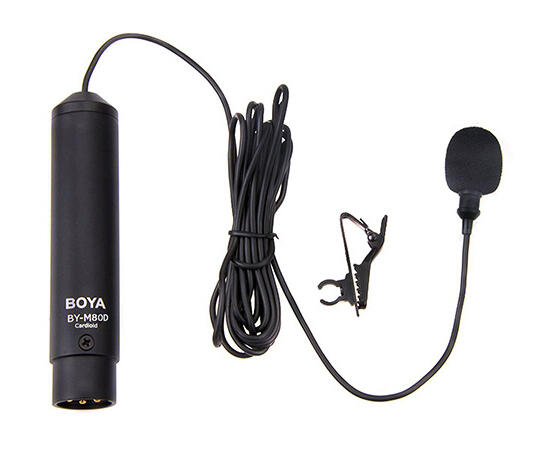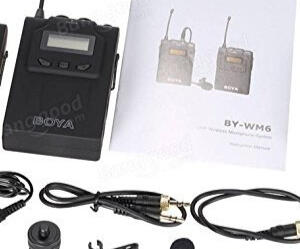What is a lavalier microphone used for?
Lavalier microphones are also the lapel microphones or clip-on mics. They are microphones with a small wire, widely use for filmmaking and broadcasting purpose. They are perfect for recording dialogue as they are safe and self-effacing and can be placed near to the mouth while living out of sight. It assures you can get clear audio in different recording conditions, whether that’s vlogging, reporting to-camera, or recording an interview.
Lavalier Mic Definition
A lavalier microphone is a pretty small microphone that is connected either directly to an actor’s body or their clothes near the chest. They happen in both wired and wireless varieties and are designed to be discrete and lightweight. A wireless lav mic requires only a transmitter box that is positioned onto an actor’s belt or in their pocket.
Lavalier mics are created to capture audio from only the person holding it, meaning multiple lav mics can be used to divide different audio tracks for each actor. So helpful in situations with a great deal of cross-talk or environments with distracting background noises.
Remember that lavalier microphones purpose only to record a conversation. If you want to record additional diegetic sounds like a gate shutting or a car engine start, they probably have to be re-recorded by a Foley artist or added in Post-Production by a Sound Artist.
Use a lavalier mic when a boom mic would be ineffective or difficult to keep out of the shot. Wide frames with excess headroom and shots with quick and/or intricate movement are situations where a lapel mic may make shooting run much more smoothly than if other types of microphones are relied upon. Grab one of lapel microphone from nerest store and conduct a test at mictest.me
Lavalier mics are used commonly in factors outside of filmmaking. Many theater and musical programs execute the use of lav mics. News programs may use lavalier mics if the anchors are needed to be hands-free.
A lav mic can also be a superior choice for anyone in a one-man team type situation. No need for anyone to hold a boom and don’t want to depend on a microphone in-built camera? A clip-on lavalier mic will be your best decision.
So here you are? A crash course of the lavalier microphone. Never matter the size or budget of your production, don't ignore the sound quality. Everything we've covered here today is affordable. This will help raise the overall production value of your next project.
Things to keep in mind while using a lapel microphone.
Position of a microphone.
Connectivity of mic with your recording device
Let learn more about each.

1) Position of a microphone.
When arranging a lavalier mic, it is necessary to think about its vicinity to your sound source (usually you or your subject’s mouth) to get the excellent sound possible. Most lavalier mics feature an omnidirectional case, meaning they pick up sound from all four directions and are hence quite forgiving when recording. However, as a common rule, it’s suggested that you place the mic on the chest, about a hand-span distance (7-11 inches) from the speaker's mouth. This will give you a natural, uncontaminated sound.
Attaching Your Lav to Its Clip.
All lavs come with a clip that permits you to position the microphone onto a piece of clothes (eg: collar or gap between buttons in shirt or loop). For first-time users, these clips can be a little disturbing, but they are very comfortable to use. Just move the windshield off the mic, pinch the spiral hook, insert your mic into the loop and free the clasp to ensure the mic in position. Now you can move the windshield back on.
Mounting Your Lav.
Putting a lavalier mic is most comfortable when there is a point in clothing to adjust it to. Such as the lapel of a jacket, the seam of a button-up shirt, or the tip of a tie. Just be sure to keep the mic away from any other part of clothing that may grind against it, as this may be audible in your recording, causing in distorted sort of sound.
When you are wearing clothes that don’t offer a straight seam for placings. In a singlet or t-shirt, things can get a little tricker. You can install the microphone on a neckline – just be conscious that if the mic is right under the neck, the sound can be distorted and sound odd. You can overcome this by using a more loose neckline. Also by fixing the mic over to the side, rather than directly below the jaw.
If you are wearing a singlet, the shoulder straps are another great spot to place a lapel mic. This is often useful while you are wearing exercise clothes. Or if you want to get creative, mounting the mic below a headband also works well. Ensure microphone placing in such a way, away 20-30 cm from the mouth. Also, the mic should not rub against any clothing pieces to achieve great results from it.
Keep It Hiding.
To make your video looking neat and professional, you may want to consider hiding the cable. You can simply tuck it out of sight under your coat or work it inside your shirt. Professional sound engineers use drapers, a tape to prevent cable against the inside of clothing.
2) Connectivity of mic with your recording device
Connecting to mobile and computers device.
YOu will need a microphone with a compatible connector to connect the mic with a smartphone or tablet. This has a TRRS jack, which is the equal connector found in most computers and mobile gadgets. Meaning you can plug it accurately in without the need for an adaptor. Insert the microphone into your device headphone port, select it as your input and output device. To do so, go to your audio settings or your recording software. Now you are ready to record.
Cameras.
If you want to record sound while shooting with the camera, you will need to opt for Lapel mics with a TRS jack.

Wireless Mics
Wireless systems are made of two main components.
A Transmitter pack, attached to the subject and captures and transmits the audio.
A receiver pack, which is plug into the recording device and collects the audio from the transmitter wirelessly.
A wireless microphone is easy to use as it provides the freedom to a person to move. Wire mics have their limitations due to a particular length of wire, which can be solved using a wireless lapel microphone.
Although there are different types of microphones, lapel mics are found useful in many cases. They come with their features and benefits. Lavalier mics provide value for money to users without any need for external sources. Here we try to explain it all thoroughly about lapel mics. While buying your first mic to shoot, try using lapel mics, as they are mostly preferred for beginners. It is because they are simple to use, comfortable, and easy to handle. Remember that these mics are not high to record your singing. They only mean to record dialogue, conversation, or interview.